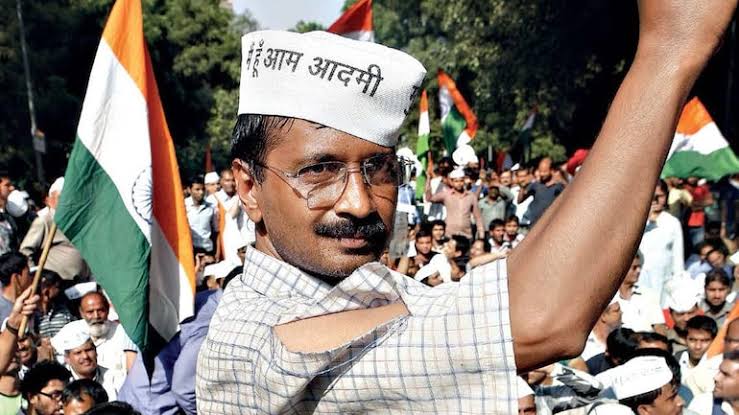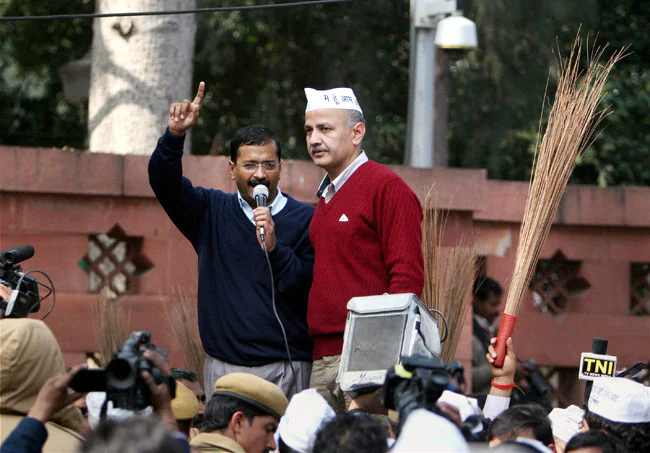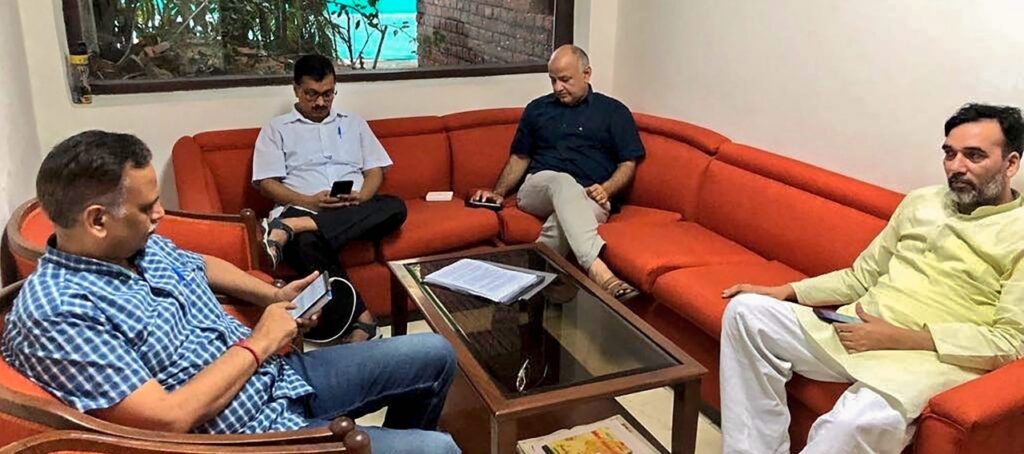What helped the AAP make it big was the assurance that they would come down to the streets and fight shoulder to shoulder alongside the common man to ensure their rights.

New Delhi: In 2011, the common man saw a ray of hope when a section from among them led by Anna Hazare hit the streets against corruption. Their hopes grew manifold when a group from among the crusaders formed a party in 2012 — the Aam Aadmi Party. It was in the name, the style of functioning, as if like a common man fighting for his rights, that made the difference.
What helped the AAP make it big was the assurance that they would come down to the streets and fight shoulder to shoulder alongside the common man to ensure their rights. So much so that even after quitting the government only after 49 days, the AAP managed to return to power with a thumping majority.
However, barely 10 years down the line, AAP seems to have lost its sheen, its connect with movements and its habit of hitting the streets against what is wrong. While the party leaders, including Chief Minister Arvind Kejriwal, keeps crying hoarse that the BJP is using its forces against the AAP due to political vendetta, the party is yet to come down to its favourite battleground — the streets.
While one of its ministers is languishing in custody and central agencies are tailing another, AAP leaders are seen making more use of their social media accounts these days, keeping behind the days of dharnas, to attack BJP. It seems to be only yesterday when less than a month after the formation of the government Delhi Chief Minister Arvind Kejriwal, all cabinet ministers, senior party leaders and MLAs along with thousands of party workers and supporters hit streets near Rail Bhawan to protest against the alleged non-cooperation by officers of the Delhi Police in their demand for safety of women.

The entire party was on the roads against alleged police inaction when the then law minister, Somnath Bharti had sought help to bust a suspected drug and prostitution racket in South Delhi. The agitation forced Lieutenant Governor Najeeb Jung to accept at least some of the demands and Kejriwal termed it a victory of the common man’s fight against drug menace.
Later, in 2015, AAP leaders once again hit the streets after a CBI raid at Chief Minister Arvind Kejriwal’s office. Furious leaders of the party approached the people of Delhi with a message against the Narendra Modi-led government for misusing his official position by engaging CBI to conduct raids at the CM’s office. It is during this movement when an iconic photograph of Kejriwal went viral which showed not a Chief Minister but a common man, clad in a sweater, raising his finger as if openly challenging the authorities.
The AAP’s scathing attacks on former Union minister Late Arun Jaitley had also taken the BJP by shock. The AAP relentlessly attacked Jaitley and asked why is CBI not investigating the irregularities in DDCA which is headed by Jaitley.
In 2018, Kejriwal, flanked by Manish Sisodia, Gopal Rai and Satyendar Jain, sat on a dharna in the waiting room of Lieutenant Governor Anil Baijal. The indefinite protest ended after a 9-day sit-in at the LG’s residence. Meanwhile, outside, the number of party workers kept swelling and it looked no less than a movement.

But not anymore. Now leaders do hold press conferences and spend time uploading social media posts but their absence from the streets doesn’t talk good about the new strategy of the party. And this is probably not the kind of action even the party workers are looking for. Amid allegations of corruption, the absence from the streets is making more people believe in the narrative that AAP is no different from any other party.
(The author is the editor of The Theorist)
